Inspire Creativity: DIY Decor for Your Home Office
In today’s fast-paced world, having a dedicated home office space is more than just a luxury; it’s a necessity for many of us. But let’s be honest, staring at bare walls and uninspiring furniture can drain your energy faster than a low battery on your phone. That’s where DIY decor comes into play! It’s all about transforming your workspace into a vibrant sanctuary that sparks creativity and boosts productivity. So, grab your tools and let’s dive into some exciting DIY decor ideas that will make your home office not just a place to work, but a source of inspiration!
Did you know that the colors around you can impact your mood and creativity? It’s true! The right color palette can turn your workspace from drab to fab in no time. For instance, blues and greens can create a calming atmosphere, while yellows and oranges can energize and inspire. Think of your office as a blank canvas; the colors you choose are the paint that brings it to life. When selecting a color palette, consider what emotions you want to evoke. Are you looking for tranquility, energy, or maybe a little bit of both?
Here are some tips for choosing your perfect palette:
- Consider the Lighting: Natural light can change how colors appear, so test your colors in different lighting.
- Start with a Base Color: Choose a neutral base color and build around it with accent colors that inspire you.
- Use Color Psychology: Research how colors affect mood and select those that align with your goals.
Nothing says “me” quite like personalized wall art! Creating pieces that reflect your personality not only enhances the aesthetics of your workspace but also serves as a daily reminder of your goals and aspirations. Think about incorporating your favorite quotes, images, or even artwork that resonates with you. The beauty of DIY is that the only limit is your imagination!
We all have those quotes that just hit home, right? Incorporating inspiring quotes and mantras into your decor can serve as a daily dose of motivation. You can easily craft beautiful displays using materials like wood, canvas, or even repurposed frames. The key is to make them visually appealing so they stand out and inspire every time you glance their way.
Framing your quotes can elevate them from simple text to stunning decor. Consider using different materials for your frames—wood, metal, or even fabric—to add texture and interest. You might even mix and match frames for a more eclectic look. Remember, your goal is to create a focal point that draws the eye and sparks inspiration!
Creating your own canvas art is another fantastic way to personalize your space. Grab some blank canvases, paint, and brushes, and let your creativity flow! You could paint abstract designs, or even write out your favorite quotes in beautiful typography. This not only adds a personal touch but also gives you the satisfaction of creating something uniquely yours.
Integrating plants into your home office is like inviting a breath of fresh air into your workspace. Not only do they improve air quality, but they also boost creativity and reduce stress. Think of plants as your little green companions that cheer you on as you work. Some great options include:
- Snake Plants: Tough and forgiving, perfect for beginners.
- Pothos: A trailing plant that adds a touch of elegance.
- Succulents: Low maintenance and come in various shapes and colors.
When it comes to your home office, functionality is key. You want furniture that not only looks great but also meets your needs. Why not embrace your inner DIY enthusiast and create or upcycle furniture that adds both style and practicality to your workspace? Imagine a desk that fits your specific requirements or storage solutions that declutter your space while looking fabulous.
Building your own desk or workstation allows you to customize it according to your preferences. Whether you prefer a standing desk, a traditional setup, or something entirely unique, the possibilities are endless. You can use reclaimed wood for a rustic vibe or sleek metal for a modern touch. The best part? You get to design it exactly how you want!
Effective storage solutions can make all the difference in keeping your workspace organized. Consider creating stylish DIY storage options using materials like crates, baskets, or even repurposed furniture. Not only will this keep your office tidy, but it will also add a personal touch that reflects your style.
Let’s not forget about lighting! The right lighting can transform your workspace and enhance your creativity. Poor lighting can lead to eye strain and fatigue, while good lighting can set the mood and keep you energized. Explore DIY lighting solutions that brighten up your office and promote a comfortable work environment.
Ambient lighting is all about creating a warm and inviting atmosphere. You can achieve this by using soft LED lights, string lights, or even DIY lamps. Think of it as setting the stage for your creativity to flourish. A well-lit space can make all the difference in how you feel while working.
Task lighting is essential for focused work. Consider adding desk lamps or adjustable lights that can be directed where you need them most. This not only improves your work efficiency but also reduces eye strain, making your workspace more comfortable.
Q: How can I make my small home office feel larger?
A: Use light colors, mirrors, and multi-functional furniture to create an illusion of space.
Q: What plants are best for low light conditions?
A: Snake plants and pothos are excellent choices for low-light environments.
Q: How can I personalize my office without spending a lot of money?
A: DIY projects using materials you already have can be a cost-effective way to personalize your space.
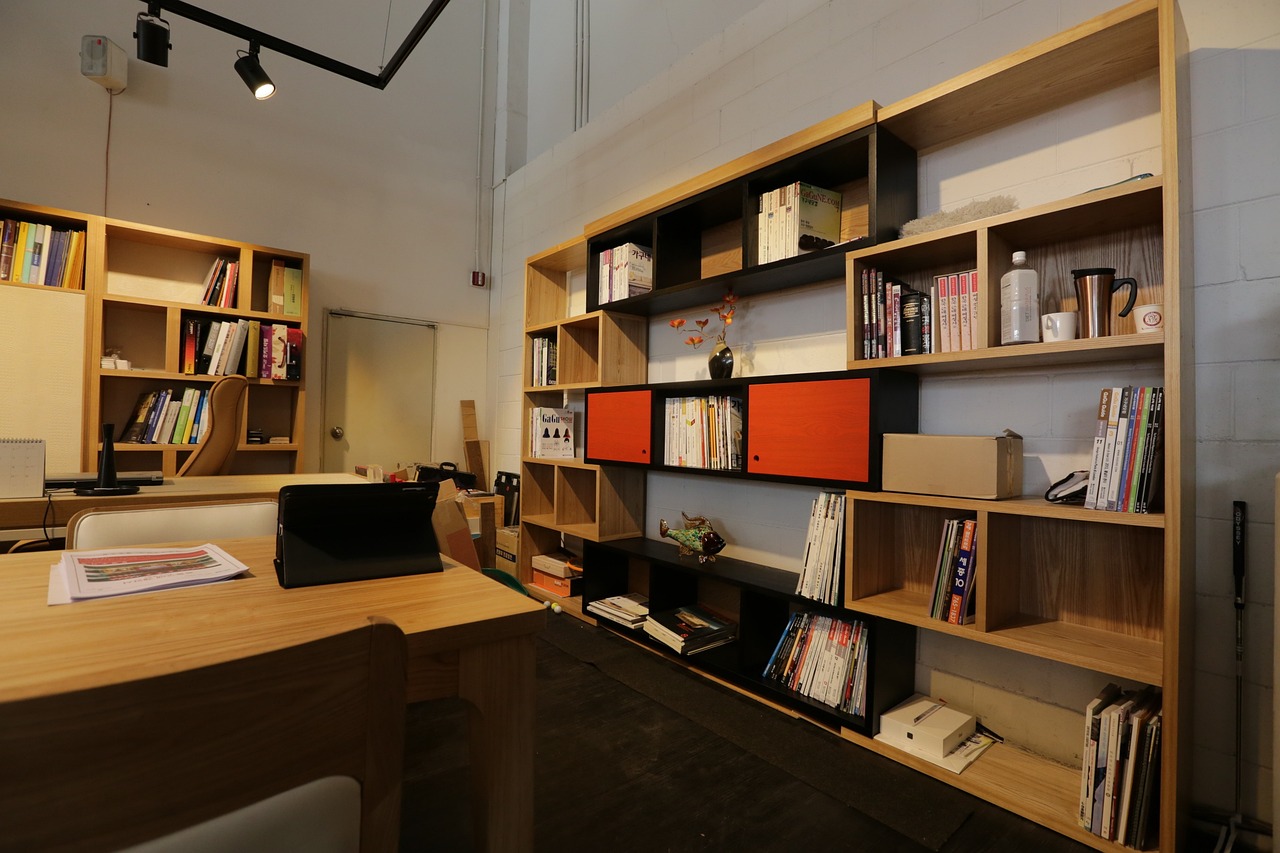
Choosing the Right Color Palette
When it comes to creating a space that fuels creativity and enhances productivity, the choice of color palette is paramount. The colors you choose for your home office can significantly influence your mood, energy levels, and overall work performance. Think of your workspace as a canvas; the right hues can evoke feelings of calm, inspiration, or even motivation. So, how do you choose a color palette that resonates with your personal style and work ethic?
First, it’s essential to understand the psychological effects of different colors. For instance, blue is known for its calming effect and can help improve focus, making it a popular choice for offices. On the other hand, yellow is associated with happiness and creativity, perfect for sparking innovative ideas. If you’re looking for a cozy and inviting atmosphere, consider warm tones like orange or red, which can stimulate conversation and enthusiasm.
To help you visualize the impact of color, here’s a quick reference table:
| Color | Effect |
|---|---|
| Blue | Calming, enhances focus |
| Yellow | Stimulates creativity, evokes happiness |
| Green | Restful, promotes balance |
| Red | Stimulates energy and passion |
| Purple | Encourages creativity and imagination |
Now that you have a grasp of color psychology, consider your personal preferences and the type of work you do. Are you in a creative field where you need to think outside the box? Maybe a vibrant palette with pops of yellow and orange would work wonders. If your work requires deep concentration, perhaps a more subdued palette with shades of blue and green would be more beneficial.
Another crucial aspect to consider is the lighting in your office. Natural light can alter how colors appear, so it’s wise to test your chosen shades in different lighting conditions. Paint swatches on your walls or use color samples to see how they look at various times of the day. This way, you can ensure your space feels just right, no matter the hour.
Finally, don’t forget to incorporate accents. If you choose a neutral base, you can always add vibrant accents through decor items, artwork, or even furniture. This approach allows for flexibility and the opportunity to change your workspace’s vibe without a complete overhaul.
In summary, selecting the right color palette for your home office is an exciting journey that can significantly affect your work environment. By understanding the psychological impacts of colors, considering your personal style, and testing your choices in different lighting, you can create a workspace that not only looks great but also inspires you to achieve your best work.
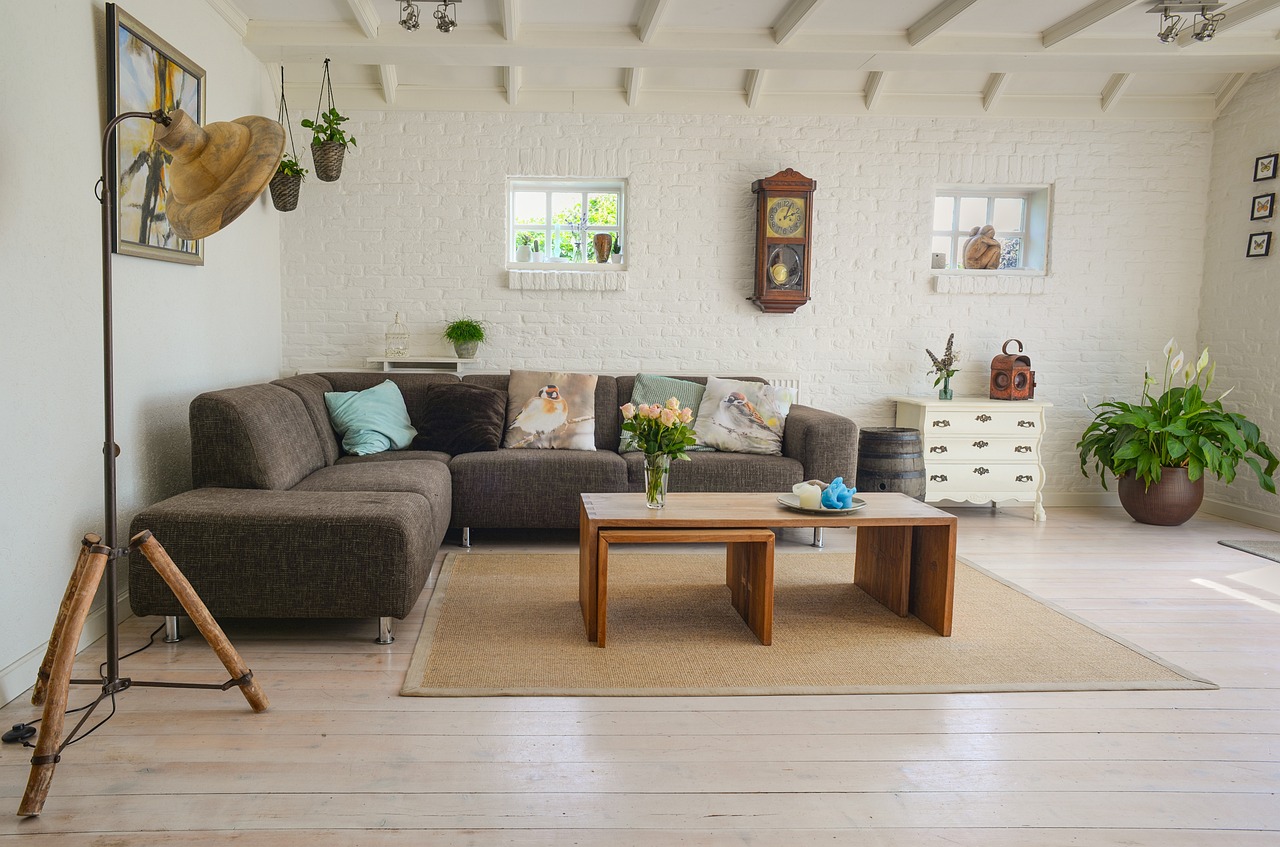
Personalized Wall Art
Creating is one of the most exciting ways to inject your personality into your home office. Think of your workspace as a canvas where your creativity can shine. Instead of opting for generic prints that everyone else has, why not craft pieces that truly resonate with you? This not only beautifies your space but also serves as a constant reminder of your passions and aspirations. Imagine walking into your office and being greeted by art that makes you smile or inspires you to tackle your next big project. Sounds great, right?
One of the simplest yet impactful ways to personalize your wall art is by incorporating quotes and mantras that speak to you. Whether it’s a phrase that motivates you or a lyric from your favorite song, having these words displayed prominently can create a positive atmosphere. You can create a visually appealing display using various methods, like painting them on canvases, using calligraphy, or even framing them in a creative way. The goal is to make your workspace a reflection of who you are, so don’t hold back!
When it comes to incorporating quotes and mantras, the options are endless. You could use vinyl decals for a sleek look or go the traditional route with framed prints. If you’re feeling particularly crafty, why not try your hand at some DIY methods? For instance, you could paint a canvas with your favorite quote using vibrant colors that match your office decor. This not only adds a personal touch but also gives you a chance to unleash your creativity.
Framing plays a crucial role in how your quotes are perceived in your office. A well-chosen frame can elevate a simple piece of art into a stunning focal point. Consider using different materials and textures for your frames—wood, metal, or even fabric can add depth and interest to your decor. Additionally, you might want to create a gallery wall where you mix and match various frames and art styles. This eclectic approach can make your workspace feel more dynamic and inspiring.
If you're looking for a more hands-on project, creating your own canvas art featuring motivational quotes is a fantastic option. All you need are some canvases, paint, and a little bit of imagination. Start by sketching out your design on paper, then transfer it to the canvas. Use bold colors for the background and play around with font styles for the text. This not only gives you a unique piece of art for your office but also allows you to express your creativity in a way that store-bought art simply can't match.
In summary, personalized wall art can transform your home office into a space that not only looks good but also inspires you every day. By incorporating quotes and mantras, using creative framing techniques, and even crafting your own canvas art, you can create an environment that fuels your creativity and productivity. So, grab your supplies and start creating a workspace that truly reflects who you are!
- What materials do I need to create personalized wall art?
You can use canvases, paints, brushes, vinyl decals, and frames. The choice depends on the type of art you want to create. - How can I incorporate quotes into my wall art?
You can paint them directly onto canvases, use printouts, or create vinyl decals to stick on your walls. - What colors should I use for my wall art?
Choose colors that inspire you and match your office decor. Bright colors can energize, while softer shades can create a calming atmosphere. - Can I mix different styles of art?
Absolutely! Mixing styles can add character to your workspace. Just ensure the overall theme aligns with your personal taste.
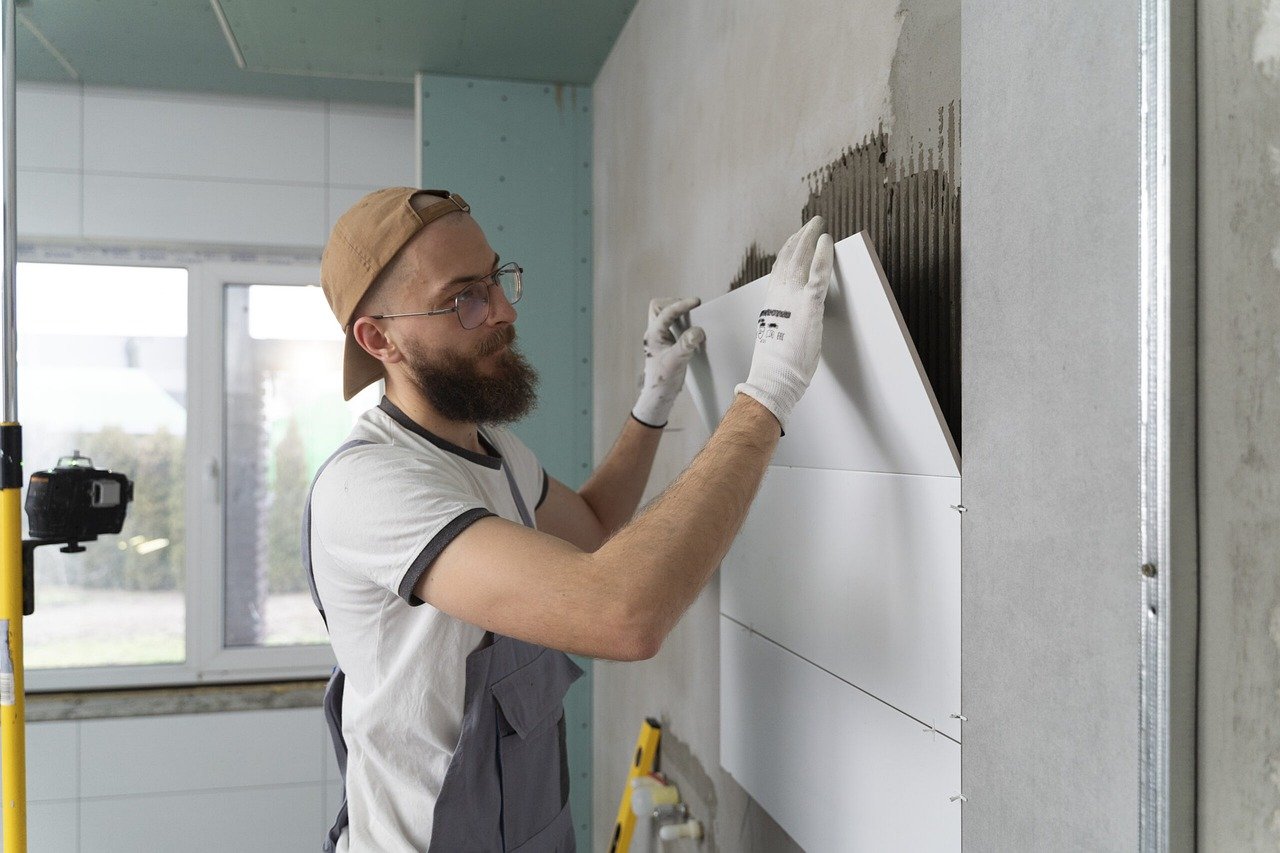
Incorporating Quotes and Mantras
Incorporating inspiring quotes and mantras into your home office decor can be a game changer. Imagine walking into your workspace and immediately feeling a surge of motivation just from the words that surround you. These powerful phrases can serve as daily reminders of your goals and aspirations, igniting your creativity and pushing you to do your best work. But how do you go about displaying these quotes in a way that’s not only visually appealing but also meaningful?
One of the simplest methods is to create a dedicated quote wall. Choose a section of your office where you can display a collection of your favorite sayings. You can use a mix of frames, clipboards, or even washi tape to hang your quotes. This eclectic approach not only adds character to your space but also allows you to switch out quotes whenever you need a fresh dose of inspiration. Think of it as a mood board for your thoughts!
Another creative method is to use DIY quote jars. Grab a few mason jars and fill them with rolled-up pieces of paper featuring different quotes or mantras. You can decorate the jars with paint or twine, making them a charming addition to your desk. Each day, you can pull out a new quote, giving you a delightful surprise that sets the tone for your day. This not only personalizes your space but also keeps your inspiration dynamic and ever-changing.
To ensure that your quotes resonate with you, consider the following tips:
- Choose quotes that reflect your personal values and aspirations.
- Mix motivational quotes with some light-hearted or humorous ones to keep things balanced.
- Consider using quotes from authors, leaders, or even friends who inspire you.
Now, let’s talk about framing techniques. The way you frame your quotes can significantly impact their visual appeal. You might opt for a minimalist look with simple black frames or go for a bohemian vibe with colorful, mismatched frames. The key is to create a cohesive look that ties your quotes into the overall aesthetic of your office. For a fun twist, try using shadow boxes to create a 3D effect with layered quotes and decorative elements.
If you’re feeling particularly artistic, why not try your hand at DIY canvas art? You can paint or print your favorite quotes on canvas, adding your personal touch to the artwork. This not only serves as a beautiful decor piece but also allows you to express your creativity. Plus, every time you glance at your canvas, you’ll be reminded of the words that inspire you to keep pushing forward.
Ultimately, incorporating quotes and mantras into your home office is about creating an environment that fuels your creativity. So, don’t be afraid to get a little creative with how you display these words of wisdom. Whether it’s through a dedicated wall, jars, or unique framing techniques, let your personality shine through. Your workspace should be a reflection of you, and what better way to do that than with the words that inspire you the most?
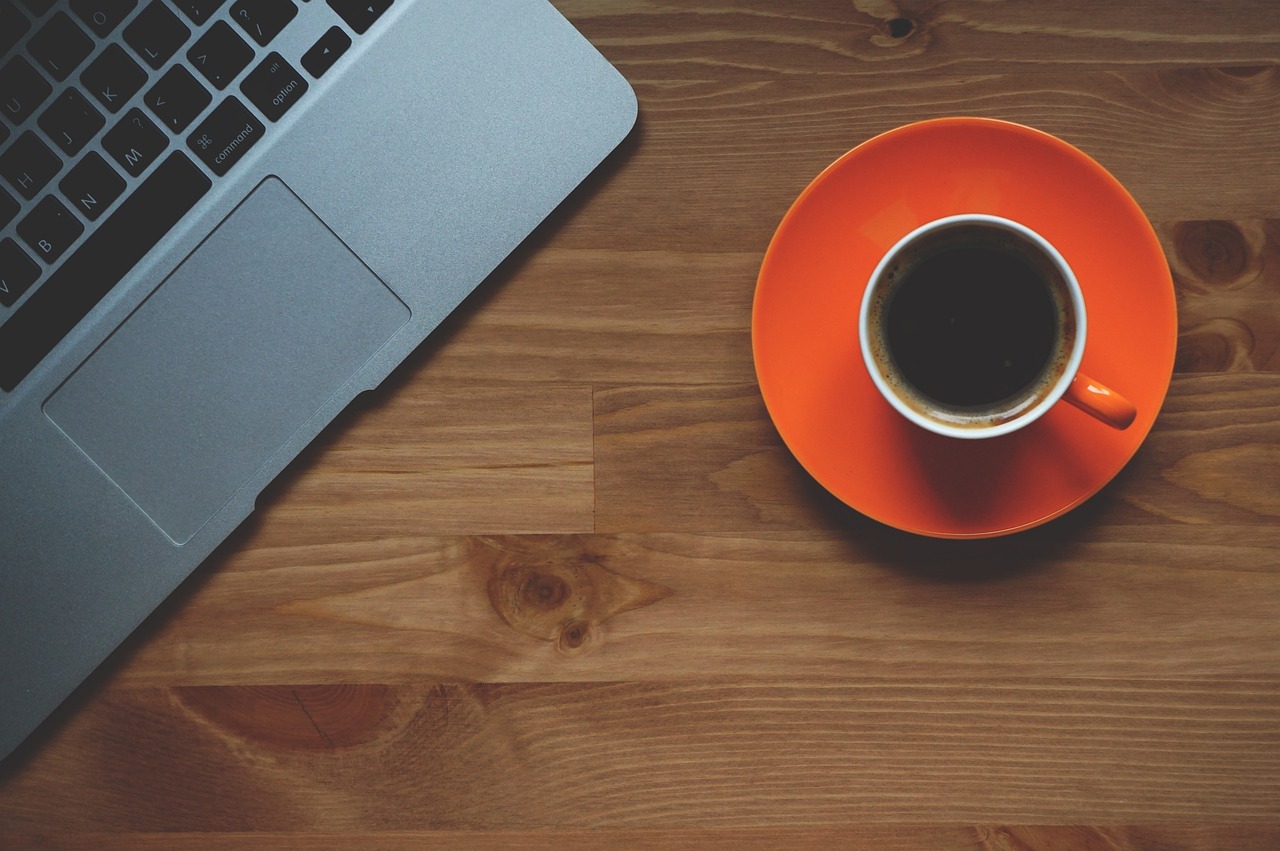
Framing Techniques
When it comes to displaying your favorite quotes and mantras, the right framing techniques can turn a simple piece of paper into a stunning focal point in your home office. Imagine walking into your workspace and being greeted by a beautifully framed quote that resonates with your ambitions and goals. Not only does this create a visually appealing environment, but it also serves as a daily reminder of what inspires you. So, how can you elevate your quote displays? Let's explore some creative framing techniques that will make your decor pop!
First off, consider the material of your frame. Wood frames can add a rustic charm, while sleek metal frames offer a modern touch. If you're feeling adventurous, try using upcycled materials—think old window frames or vintage picture frames that you can paint or decorate. This not only gives your workspace a unique flair but also reflects your personality. You can even mix and match different frame styles and colors to create an eclectic gallery wall that draws the eye and sparks conversation.
Next, the size of your frames matters significantly. A large frame can serve as a statement piece, while smaller frames can be grouped together for a more dynamic look. To achieve a balanced aesthetic, consider the rule of thirds. This principle suggests that you should divide your wall into three equal sections, both horizontally and vertically, and place your frames accordingly. This technique helps create a harmonious arrangement that’s pleasing to the eye.
Don’t forget about the matting! Adding a mat around your artwork can enhance its visual impact. A mat provides a border that separates the quote from the frame, allowing it to breathe and stand out. Choose a mat color that complements your quote and the overall color scheme of your office. For a more artistic approach, you could even create a custom mat by using patterned paper or fabric, making your display even more unique.
Another technique to consider is the layering of frames. You can layer smaller frames over larger ones to create depth and interest. This adds an artistic dimension to your decor and can be a fun way to showcase multiple quotes or artworks. Think of it as creating a mini gallery right in your home office! Just ensure that the colors and styles of the frames harmonize well to avoid a cluttered look.
Finally, think about the placement of your framed quotes. They should be at eye level—this is usually between 57 to 60 inches from the floor. This height allows you to easily read and appreciate the quotes without straining your neck. You can also consider using a shelf to display your frames. This allows for easy rearranging and gives a casual, laid-back vibe to your workspace.
In conclusion, using thoughtful framing techniques can transform your quotes into stunning pieces of art that not only beautify your home office but also inspire creativity and motivation. So gather your favorite quotes, choose your frames wisely, and let your decor speak volumes about your personal style and aspirations!
- What materials are best for framing DIY art?
Wood, metal, and even upcycled materials like old window frames work great for framing. Choose materials that resonate with your style.
- How do I choose the right size frame?
Consider the size of your wall and the overall aesthetic you want to achieve. A good rule of thumb is to mix sizes for a more dynamic look.
- Can I create my own mats?
Absolutely! Use patterned paper or fabric to create custom mats that add a unique touch to your frames.
- What is the ideal height for hanging frames?
Frames should be hung at eye level, typically between 57 to 60 inches from the floor.
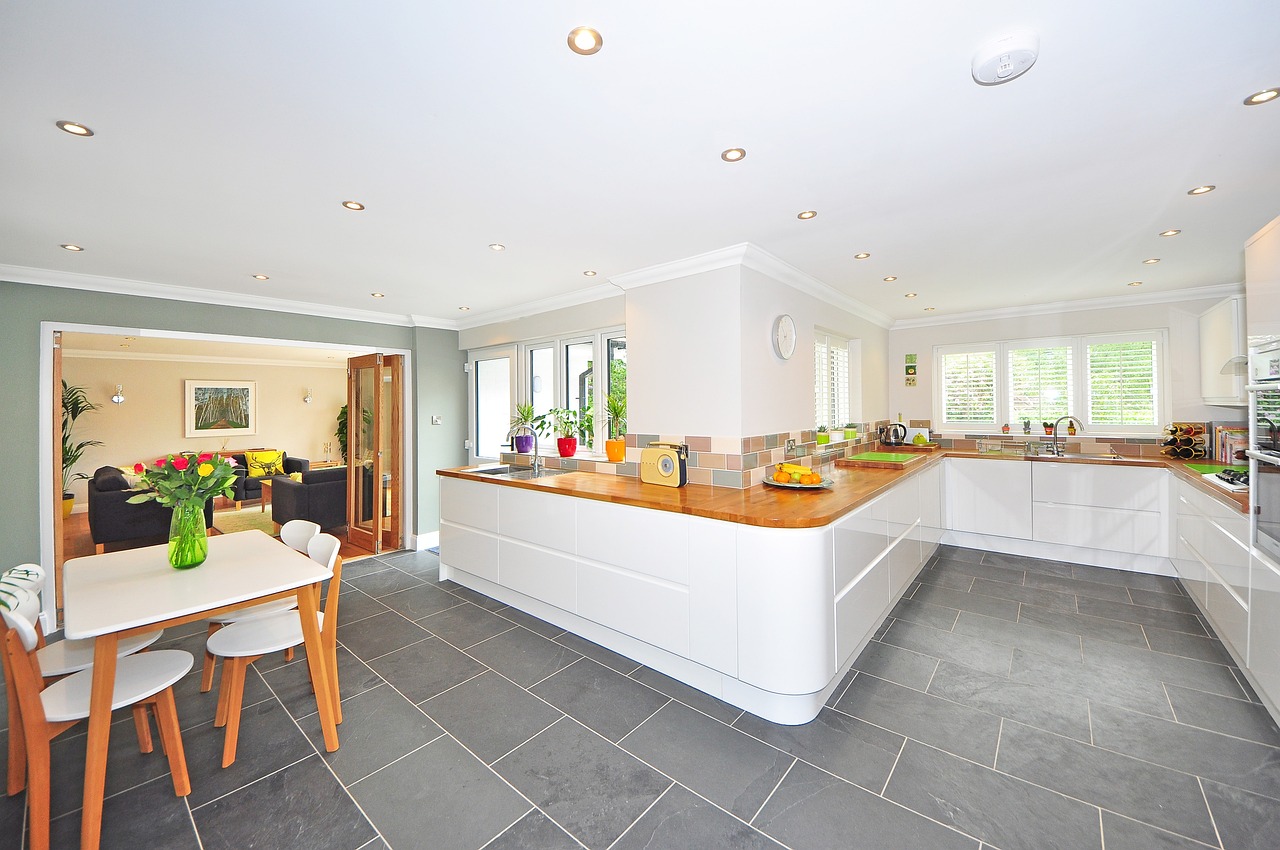
DIY Canvas Art
Creating your own canvas art is not just a fun activity; it’s a fantastic way to add a personal touch to your home office. Imagine walking into your workspace and being greeted by a piece of art that resonates with your creative spirit. DIY canvas art allows you to express your individuality while also serving as a source of inspiration. Plus, the process of making it can be therapeutic, helping you to unwind and focus your thoughts. So, let’s dive into how you can craft stunning pieces that will not only beautify your space but also motivate you daily!
First things first, gather your materials. You’ll need:
- Canvas (available in various sizes)
- Acrylic paints or watercolors
- Paintbrushes (different sizes for detail and broad strokes)
- Palette for mixing colors
- Optional: stencils, sponges, or any embellishments you fancy
Once you have your supplies, it’s time to unleash your creativity. Start by deciding on a theme or message you want your canvas to convey. It could be a motivational quote, an abstract design, or even a nature-inspired scene. The beauty of DIY is that the only limit is your imagination!
For instance, if you’re inspired by quotes, you can paint a simple background and use stencils to add your favorite phrases. This not only enhances the visual appeal but also serves as a daily reminder of your goals and aspirations. You might choose phrases like:
- "Believe in yourself."
- "Creativity takes courage."
- "Dream big, work hard."
After sketching your design lightly on the canvas, begin by painting the background. Let your creativity flow—mix colors, experiment with different brush strokes, and don’t be afraid to get messy! Once the background is dry, you can add your quotes or designs. Consider using contrasting colors for the text to ensure it stands out beautifully against the background.
As you work, remember that imperfections can add character to your piece. Embrace the process, and let your canvas reflect your unique style. After all, art is subjective, and what matters most is that it resonates with you.
Once you finish your masterpiece, allow it to dry completely before hanging it in your home office. You can frame it or simply stretch it over a wooden frame to give it a polished look. Hang it in a spot where you can see it often, allowing it to inspire you every day.
In conclusion, DIY canvas art is an excellent way to personalize your workspace while fostering an atmosphere of creativity. So gather your supplies, let your imagination soar, and create something that not only beautifies your office but also ignites your passion for your work!
Q: What type of paint is best for canvas art?
A: Acrylic paints are highly recommended for beginners due to their vibrant colors and quick drying time. Watercolors can also be used for a softer look.
Q: Can I use old canvases for my DIY projects?
A: Absolutely! You can paint over old canvases or even use them as a base for new designs, making it a sustainable option.
Q: How do I hang my canvas art?
A: Use picture hanging strips for a no-damage solution or traditional picture hooks for a more secure hold. Ensure you choose a spot that gets enough light to showcase your art!
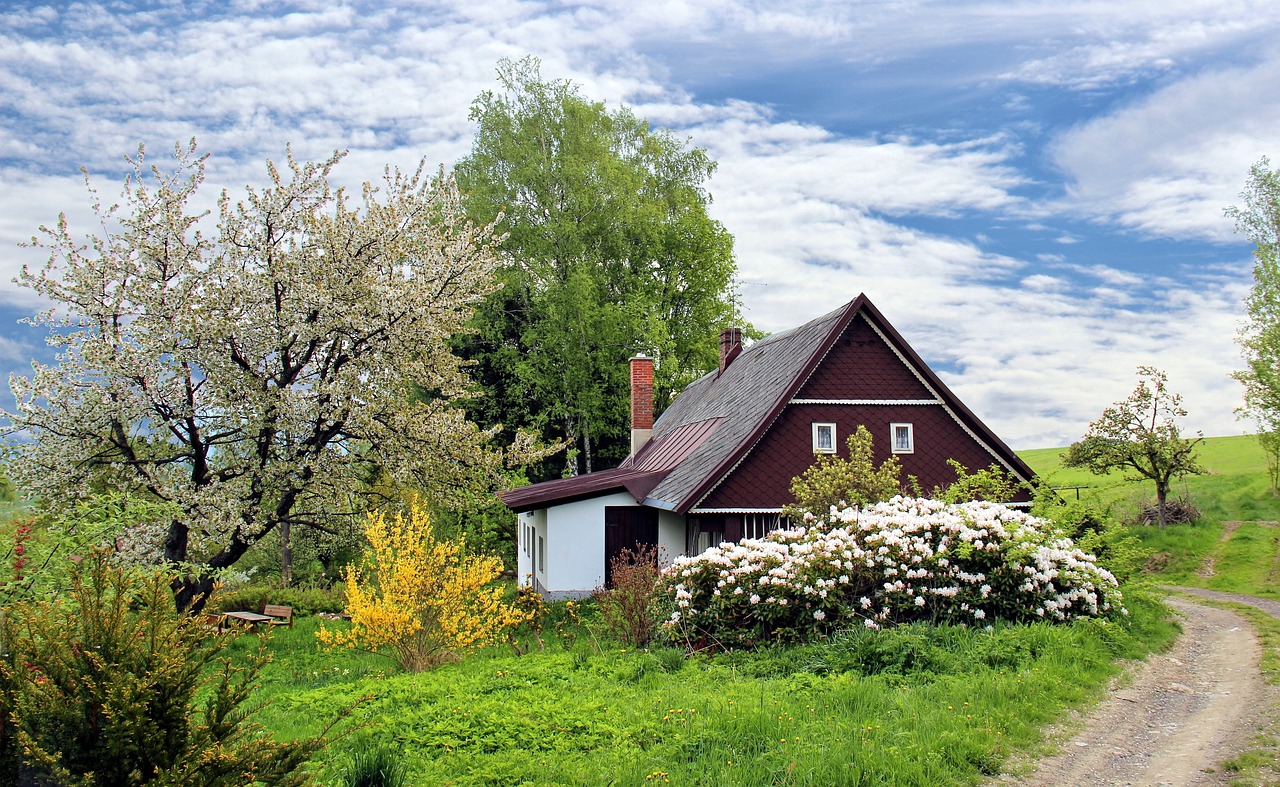
Using Plants for Inspiration
Integrating plants into your home office is not just about aesthetics; it's about creating a vibrant atmosphere that fosters creativity and enhances your overall well-being. Imagine sitting at your desk, surrounded by lush greenery, breathing in the fresh air that plants naturally purify. It's like having a mini-ecosystem that not only beautifies your space but also invigorates your mind. Studies have shown that being around plants can lead to increased productivity, reduced stress levels, and improved focus. So, how can you harness the power of plants in your workspace?
First, consider the types of plants that thrive indoors and require minimal maintenance. Here are a few fantastic options that can easily fit into your home office:
- Snake Plant: Known for its air-purifying qualities, this plant is nearly indestructible and can survive in low light.
- Pothos: This trailing vine is perfect for draping over shelves or hanging in a pot, adding a touch of elegance and life.
- Spider Plant: A favorite for its ability to thrive in a variety of conditions, it also produces "baby" plants that you can propagate.
- Peace Lily: With its beautiful white blooms, this plant not only looks stunning but also helps to filter out harmful toxins in the air.
To truly make the most of your plants, think about their placement. Position them near your workspace where you can easily see and interact with them. This visibility can serve as a gentle reminder to take breaks and breathe, ultimately boosting your creativity. You might want to consider creating a small plant corner in your office. This could be a dedicated shelf or a windowsill filled with various plants, each chosen for its unique benefits.
Moreover, caring for your plants can be a therapeutic ritual. Watering them, trimming their leaves, or simply observing their growth can offer a refreshing break from your work routine. It’s like having a living piece of art that evolves and changes, just like your creative projects. So, don’t hesitate to dive into the world of indoor gardening; it can transform your workspace into an inspiring haven.
If you're not sure where to start, consider creating a simple care schedule for your plants. You might want to jot down notes about watering frequency, sunlight needs, and any special care instructions. This not only helps you stay organized but also ensures that your green friends thrive. Here’s a quick table to help you keep track:
| Plant Name | Watering Frequency | Light Requirements | Special Care |
|---|---|---|---|
| Snake Plant | Every 2-3 weeks | Low to bright indirect light | Allow soil to dry out between waterings |
| Pothos | Every week | Low to bright indirect light | Trim regularly to encourage growth |
| Spider Plant | Every week | Bright, indirect light | Propagate "babies" for new plants |
| Peace Lily | Once a week | Low to bright indirect light | Wipe leaves to remove dust |
In conclusion, using plants as a source of inspiration in your home office is a simple yet effective way to enhance your creative process. They not only beautify your workspace but also contribute to your mental and emotional health. So go ahead, bring a bit of nature indoors, and watch how it transforms your productivity and creativity!
Q: How many plants should I have in my home office?
A: It depends on your space and personal preference. A few well-placed plants can make a significant impact without overwhelming your workspace.
Q: Are there plants that are better for low-light conditions?
A: Yes! Plants like the Snake Plant and Pothos thrive in low-light environments, making them perfect for home offices with limited natural light.
Q: How can I ensure my plants stay healthy?
A: Regularly check their soil moisture, provide adequate light, and follow a care schedule to keep them thriving.

Functional Furniture Choices
When it comes to designing your home office, functional furniture plays a pivotal role in enhancing both your productivity and comfort. Imagine sitting at a desk that not only looks good but also caters to your every need. It’s like having a personal assistant that never gets tired! The right furniture can transform your workspace into a sanctuary of creativity and efficiency.
First off, consider the importance of ergonomics. A chair that supports your back and a desk at the right height can make a world of difference. You want to avoid that dreaded back pain that comes from hours of sitting. Investing in a good ergonomic chair is like giving your body a hug every time you sit down to work. Pair that with a desk that allows you to alternate between sitting and standing, and you’ve got a winning combination that keeps your energy levels high.
Now, let’s talk about DIY options. Building your own furniture can be an exciting project that allows you to customize your workspace according to your specific needs. For instance, you could create a desk with built-in storage to keep your essentials within arm's reach. Or, if you’re short on space, a foldable desk that you can tuck away when not in use can be a game-changer. The beauty of DIY is that you can tailor every detail to your style. Plus, there’s something incredibly satisfying about using a piece of furniture that you crafted with your own hands!
To give you some inspiration, here are a few functional furniture ideas you might consider:
- Multi-Functional Desks: Desks with adjustable heights or those that come with built-in shelves can save space and increase efficiency.
- Storage Solutions: Look for furniture that doubles as storage, such as ottomans or benches with hidden compartments. This keeps your office tidy while adding a touch of style.
- Creative Workstations: Think outside the box! A repurposed dining table or even a sturdy bookshelf can serve as a unique workstation.
Remember, the goal is to create a workspace that reflects your personality while also being highly functional. You might want to sketch out a layout of your office to visualize how different pieces will fit together. This can help you avoid clutter and ensure that everything has its place.
In addition to traditional furniture, consider incorporating modular pieces that can be rearranged as your needs change. For example, movable shelving units can be adapted for different tasks, whether you’re working on a project or holding a video call. Flexibility is key in a home office, and modular furniture allows you to adjust your space with ease.
Lastly, don’t forget about the aesthetic appeal of your furniture choices. A well-designed workspace can inspire creativity and make you feel more at home. Choose colors and materials that resonate with you—whether it’s a sleek, modern desk or a rustic wooden table. The furniture you select should not only serve a purpose but also bring joy to your daily routine.
Q: What are the essential pieces of furniture for a home office?
A: At a minimum, you’ll need a comfortable desk and chair. Depending on your work style, you might also consider storage solutions and additional seating for meetings.
Q: How can I make a small office feel larger?
A: Opt for lighter colors and multi-functional furniture. Mirrors can also create an illusion of space.
Q: Are there any DIY furniture projects suitable for beginners?
A: Absolutely! Simple projects like building a small bookshelf or a desk organizer can be great starting points for beginners.
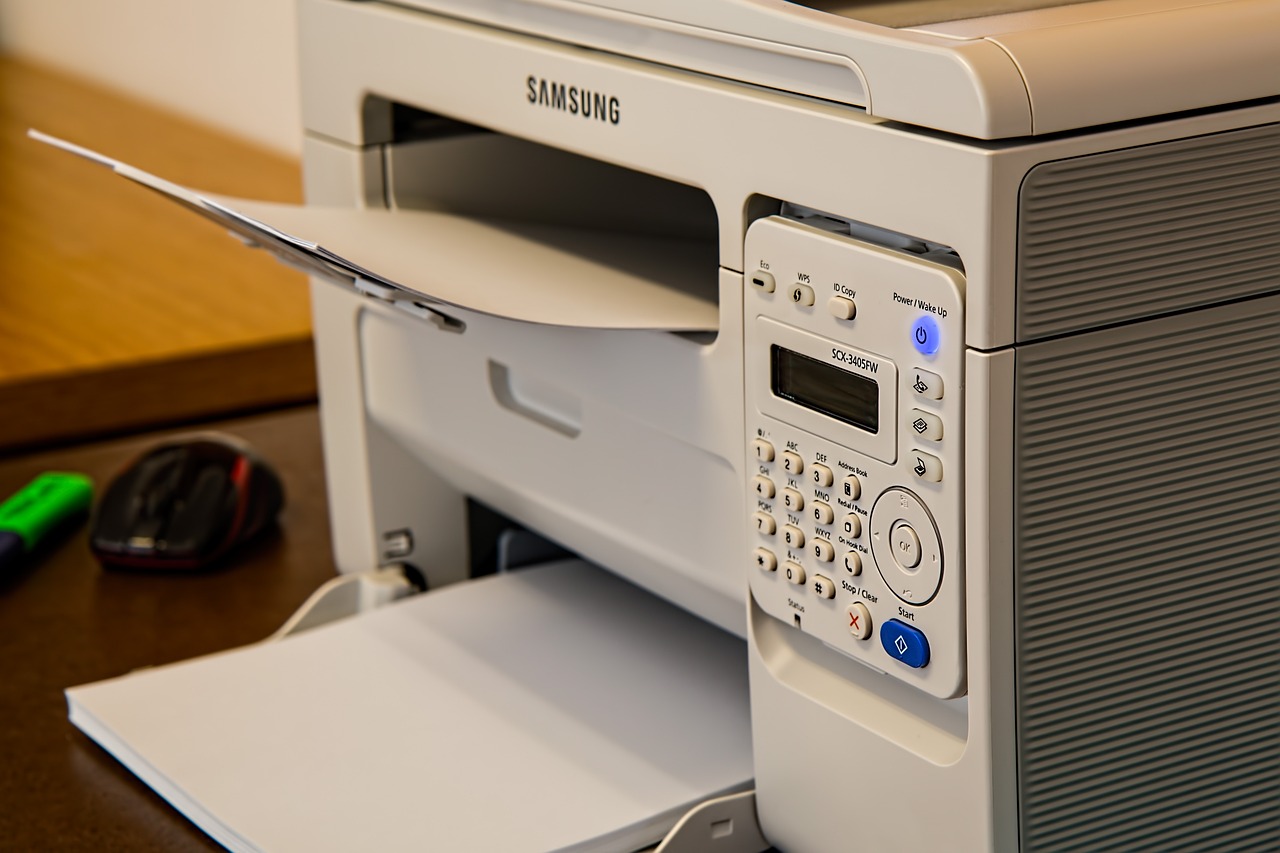
DIY Desks and Workstations
When it comes to creating a workspace that truly reflects your style and meets your functional needs, building your own desk or workstation can be a game-changer. Not only does it allow you to customize the dimensions and design to fit your space perfectly, but it also adds a personal touch that store-bought furniture often lacks. Imagine walking into your home office and seeing a desk that you crafted with your own hands—how inspiring is that?
First, let’s talk about the materials. You can go for reclaimed wood for a rustic look, or opt for sleek metal for a modern vibe. The choice is really yours! Consider the following options when selecting materials:
| Material | Style | Durability |
|---|---|---|
| Reclaimed Wood | Rustic | High |
| Metal | Modern | Very High |
| Plywood | Contemporary | Medium |
| Laminate | Versatile | Medium |
Once you've chosen your materials, the next step is to sketch out a design that suits your workflow. Do you need a large surface for multiple monitors? Or perhaps you prefer a compact design that maximizes space? Don't forget to include storage solutions like shelves or drawers to keep your workspace tidy. A clutter-free environment can significantly boost your productivity!
Now, let’s dive into some creative ideas for DIY desks:
- Floating Desk: If you’re short on space, consider a floating desk. It’s mounted on the wall and gives the illusion of more room while providing a sleek, modern look.
- Corner Desk: Make the most of an unused corner by building a corner desk. This design can be particularly effective if you want to maximize your workspace.
- Adjustable Height Desk: For those who like to switch between sitting and standing, an adjustable height desk can be a fantastic project. You can use a simple mechanism to raise and lower the surface.
After constructing your desk, don’t forget to personalize it! Add a coat of paint or varnish, or even some decorative elements like stencils or decals to make it uniquely yours. This personal touch not only enhances the aesthetics but also creates a workspace that feels inviting and inspiring.
Finally, think about the ergonomics of your workstation. The height of your desk, the position of your monitor, and the type of chair you use can all affect your comfort and productivity. Aim for a setup that keeps your body in a neutral position to avoid strain and fatigue.
In summary, building your own desk or workstation is not just a fun project; it's a way to create a space that inspires creativity and productivity. With the right materials, a thoughtful design, and a bit of personal flair, you can transform your home office into a motivating environment that works for you.
Q: What materials are best for a DIY desk?
A: It depends on your style! Reclaimed wood offers a rustic charm, while metal provides a modern touch. Plywood and laminate are also great for a contemporary look.
Q: How do I ensure my desk is ergonomic?
A: Make sure your desk height allows your elbows to be at a 90-degree angle when typing, and your monitor should be at eye level to reduce neck strain.
Q: Can I build a desk without advanced tools?
A: Yes! Many DIY desk projects can be completed with basic tools like a saw, drill, and measuring tape. Look for simple designs that require minimal equipment.
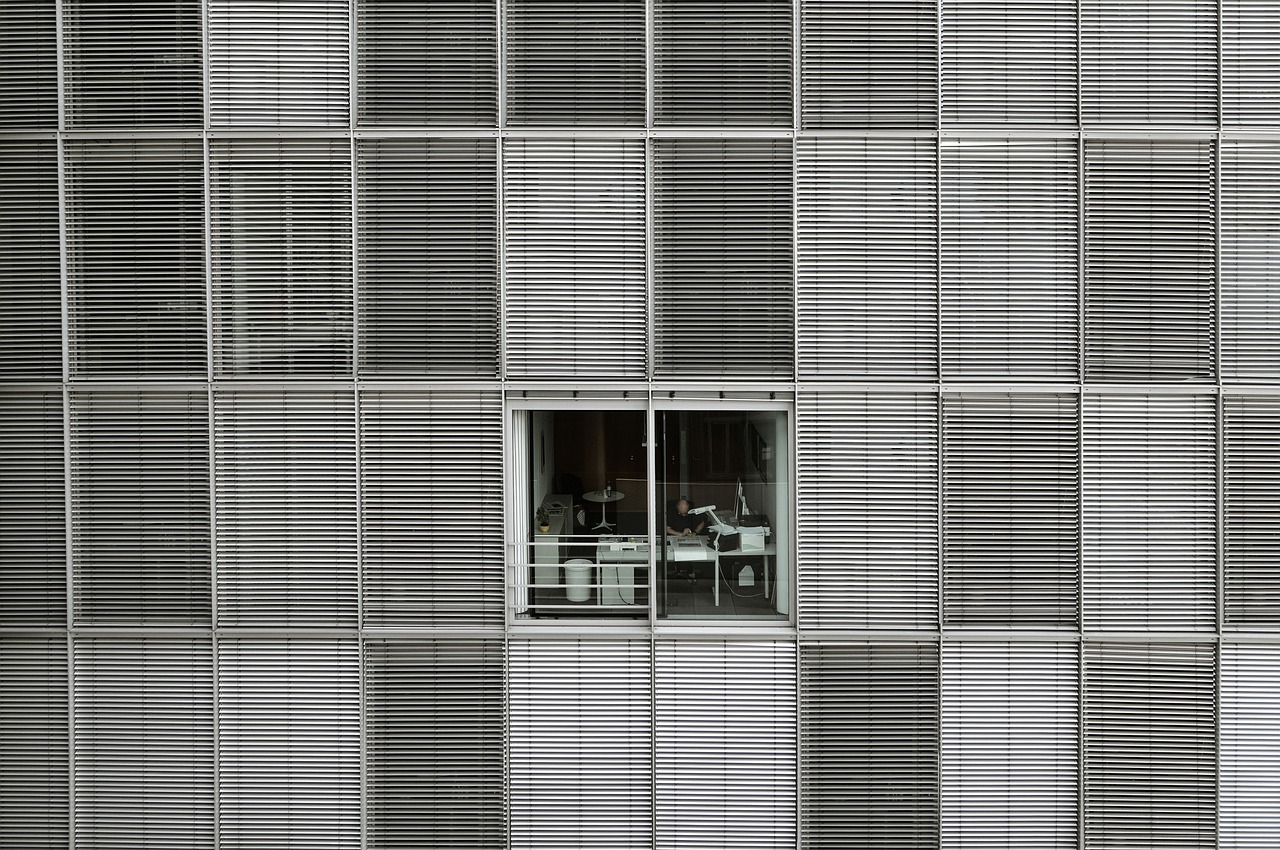
Storage Solutions
When it comes to creating a productive home office, effective storage solutions are your best friends. Imagine a workspace where everything has its place, and clutter is a thing of the past. Not only does this promote organization, but it also fosters a clear mind, allowing your creativity to flow freely. So, how do you achieve this? Let’s dive into some innovative DIY storage ideas that can elevate your office space.
First off, consider the importance of vertical space. Many of us overlook the walls when thinking about storage. By utilizing wall-mounted shelves, you can free up precious desk space while displaying books, plants, or decorative items that inspire you. For instance, floating shelves can be a stylish way to showcase your favorite books or even a small collection of art supplies. Not only do they serve a functional purpose, but they also add a personal touch to your decor.
Next, think about multifunctional furniture. A desk that doubles as a storage unit is a game changer. You can build or upcycle a desk with built-in drawers or shelves for a sleek look. This way, you can keep your essentials close at hand without sacrificing style. Imagine having a beautiful workspace where everything you need is neatly tucked away, yet easily accessible. It’s like having your cake and eating it too!
Another fantastic DIY storage solution is to create custom organizers for your desk. You can use materials like cardboard, wood, or even repurpose old containers. For example, a simple wooden box can be transformed into a stylish pen holder or a small drawer for sticky notes and paper clips. You can personalize these organizers by painting them in colors that resonate with your office’s palette, making them not just functional but also aesthetically pleasing.
If you're feeling particularly crafty, consider building a pegboard wall. This versatile solution allows you to hang various items like scissors, notepads, or even your favorite quotes in a visually appealing manner. Pegboards are not only practical but also provide an opportunity to showcase your creativity. You can paint them in vibrant colors or leave them natural for a rustic feel, depending on your style. Plus, they can easily be rearranged as your needs change.
Lastly, don't underestimate the power of baskets and bins. These can be used to store anything from office supplies to personal items, keeping your workspace tidy. You can place them under your desk or on shelves, and they come in various materials and styles. Choose ones that complement your decor, and you'll have a storage solution that looks great while keeping everything organized.
In summary, creating effective storage solutions in your home office is all about maximizing space and minimizing clutter. By utilizing vertical space, opting for multifunctional furniture, crafting custom organizers, incorporating pegboards, and using stylish baskets, you can transform your workspace into a haven of creativity and productivity. Remember, a well-organized office is not just about aesthetics; it’s about creating an environment that inspires you to do your best work.
- What are some quick DIY storage ideas for a small home office?
Utilize vertical shelving, repurpose containers for organizing supplies, and consider using under-desk storage solutions. - How can I make my storage solutions more aesthetically pleasing?
Choose storage items that match your color palette and decorate them with paint or fabric to integrate them into your overall decor. - What materials are best for DIY storage projects?
Wood, cardboard, and metal are great options for building custom storage solutions, depending on your desired look and durability.

Lighting Essentials for Creativity
When it comes to crafting the perfect home office, lighting plays a pivotal role that often goes unnoticed. Imagine sitting down to work, and the moment you flick on the lights, the entire atmosphere shifts. Proper lighting not only illuminates your workspace but also sets the mood for creativity and productivity. Think of it as the stage lighting in a theater; without it, even the most talented actors can’t shine. So, how can you transform your office lighting to inspire creativity?
First off, it’s essential to understand that different types of lighting can have varying effects on your mood and energy levels. For instance, natural light is known to boost your mood and increase focus, while harsh fluorescent lights can lead to eye strain and fatigue. If you have the luxury of a window, embrace it! Position your desk near it to take advantage of that glorious sunlight. However, if you find yourself working late into the night or in a room without natural light, consider supplementing with some DIY lighting solutions.
One effective way to create an inviting atmosphere is through ambient lighting. This type of lighting provides a soft glow that fills the room, making it feel cozy and welcoming. You can achieve this by using string lights or soft LED lamps that can be easily made at home. For example, wrapping fairy lights around a corkboard or hanging them above your desk can create a whimsical feel, inspiring creativity and keeping you motivated.
Another crucial aspect is task lighting. This is where you focus on specific areas of your workspace, such as your desk or reading nook. A good desk lamp can make a world of difference. Look for lamps that are adjustable in brightness and angle to reduce eye strain and ensure that you have enough light for detailed tasks. DIY desk lamps can be made from items like mason jars or even repurposed wine bottles, adding a unique touch to your office while being functional.
To give you a clearer understanding of how different lighting options can work together, consider the following table:
| Lighting Type | Description | DIY Ideas |
|---|---|---|
| Ambient Lighting | Soft, diffused light that fills the room. | String lights, soft LED lamps. |
| Task Lighting | Focused light for specific tasks. | Adjustable desk lamps, DIY lamps from jars. |
| Accent Lighting | Highlights specific areas or decor. | Spotlights, decorative candles. |
Lastly, don’t forget about accent lighting. This type of lighting adds depth and character to your workspace. Use it to highlight your favorite pieces of art or plants. A simple way to create accent lighting is through decorative candles or small spotlights that draw attention to specific areas. The flickering of candlelight can create a calming environment, perfect for those moments when you need to think outside the box.
In conclusion, lighting is not just a functional element of your home office; it’s an essential component that can either enhance or hinder your creativity. By carefully selecting and designing your lighting setup, you can create a workspace that is not only practical but also inspiring. So, are you ready to brighten up your home office and unleash your creative potential?
Q: How can I improve natural lighting in my home office?
A: To enhance natural lighting, position your desk near windows, use light-colored curtains, and keep the area around the window clear of obstructions.
Q: What type of light bulbs are best for a home office?
A: Look for LED bulbs with a color temperature of 3000K to 5000K, as they provide a warm and inviting light that mimics daylight.
Q: Can I make my own desk lamp?
A: Absolutely! You can use materials like mason jars, old bottles, or even wood to create a unique desk lamp that suits your style.

Creating Ambient Lighting
When it comes to crafting a workspace that sparks creativity and promotes productivity, the importance of ambient lighting cannot be overstated. Think of your home office as a canvas; the right lighting is the brush that paints the mood. Ambient lighting sets the overall tone of the room, creating a warm and inviting atmosphere that can help you feel more relaxed and focused. But how do you achieve this perfect balance of light? Let's dive into some creative ideas!
First, consider the natural light in your space. If you’re lucky enough to have a window, embrace it! Natural light is not only energizing, but it can also enhance your mood and creativity. Position your desk near the window to take advantage of the daylight. However, if your office lacks sufficient natural light, don’t fret. There are plenty of DIY solutions to create that cozy, ambient glow.
One popular method is to use string lights. These charming little lights can be draped around your workspace, adding a touch of whimsy and warmth. You can find them in various styles, from classic fairy lights to more modern, industrial designs. Hang them along a wall, wrap them around your desk, or even place them in a glass jar for a fun, DIY lamp. Not only do they provide soft illumination, but they also serve as a decorative element that reflects your personality.
Another fantastic option is to incorporate floor lamps and table lamps into your decor. These fixtures offer versatility and can be easily moved to suit your needs. When selecting lamps, look for those with adjustable brightness settings or soft, diffused shades that emit a gentle light. This allows you to customize the lighting based on the time of day or the task at hand. For instance, you might want brighter light during focused work sessions and softer light during breaks or creative brainstorming.
If you're feeling adventurous, why not try your hand at making a DIY lamp? You can repurpose items like mason jars, wine bottles, or even old books to create a unique lighting fixture that adds character to your office. A simple online search can yield countless tutorials that guide you through the process, making it a fun and rewarding project.
To further enhance your ambient lighting, consider using smart bulbs. These innovative devices allow you to control the color and intensity of your lights through your smartphone or voice commands. Imagine being able to switch from a bright, energizing white light during the day to a warm, soothing hue in the evening—all with just a tap or a simple voice command! This technology not only adds convenience but also elevates your workspace ambiance to a whole new level.
In summary, creating ambient lighting in your home office involves a blend of natural light, decorative fixtures, and innovative solutions. By thoughtfully choosing your lighting elements, you can transform your workspace into a haven of inspiration and creativity. So go ahead, experiment with different lighting options, and watch as your home office evolves into a space that truly reflects your unique style and fosters productivity!
- What is ambient lighting?
Ambient lighting refers to the overall illumination of a space, providing a soft, diffused light that creates a comfortable atmosphere. - How can I improve natural light in my office?
Position your desk near windows, use light-colored curtains, and avoid heavy furniture that blocks light. - Are smart bulbs worth the investment?
Absolutely! Smart bulbs offer flexibility and customization that can enhance your workspace's ambiance significantly.
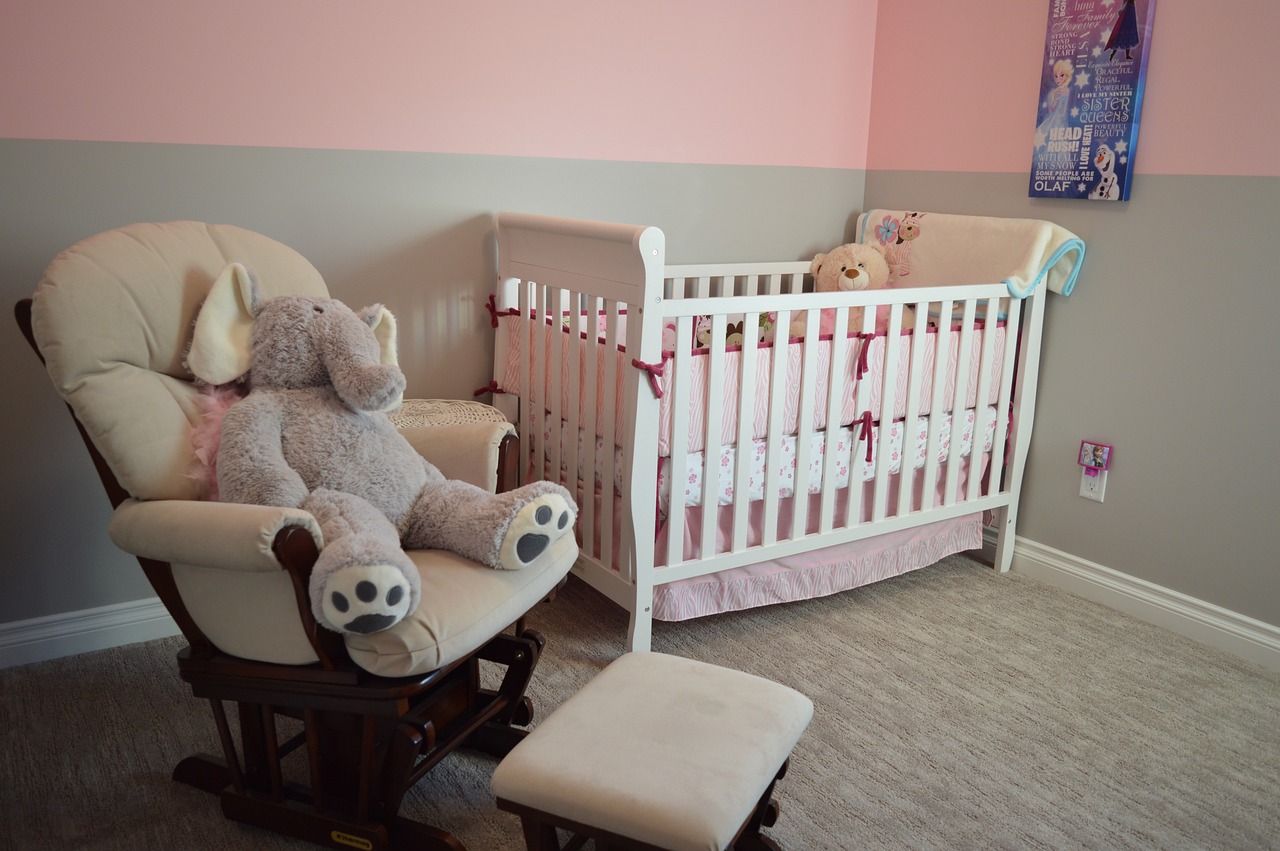
Task Lighting Ideas
When it comes to creating a productive workspace, task lighting plays a pivotal role. Imagine trying to focus on a project with dim, flickering lights—frustrating, right? Task lighting is specifically designed to illuminate your workspace without causing glare or eye strain. It’s like having a spotlight on your ideas, allowing you to unleash your creativity without the distraction of poor lighting.
One of the best ways to incorporate task lighting is through adjustable desk lamps. These versatile pieces can be positioned to shine directly on your workspace, providing the necessary illumination for reading, writing, or crafting. Look for lamps with LED bulbs as they offer bright light while being energy-efficient. Plus, many modern designs come with features like brightness adjustment and color temperature settings, allowing you to customize the lighting to suit your mood and task at hand.
Another fantastic option for task lighting is the use of clip-on lights. These handy gadgets can be attached to the edge of your desk or even a bookshelf, providing focused light exactly where you need it. They’re perfect for small spaces and can be easily moved around as your needs change. You might even consider using a combination of different lighting sources to create a layered effect. For instance, pairing a desk lamp with a wall-mounted light can enhance the overall ambiance of your office.
For those who enjoy a bit of DIY, creating your own task lighting can be a fun project. Consider repurposing old lamps or using materials like wood, metal, or even mason jars to craft a unique fixture that matches your personal style. Not only will this give your office a personal touch, but it can also be a conversation starter when guests come to visit. Just remember to keep safety in mind—ensure that any electrical components are properly installed and secured.
Here are a few additional tips to keep in mind while setting up your task lighting:
- Positioning: Place your light source to the side of your dominant hand to reduce shadows while working.
- Brightness: Aim for a light that provides enough brightness without being harsh on the eyes.
- Color Temperature: Choose bulbs with a color temperature of around 4000K to 5000K for a bright, daylight-like effect that promotes alertness.
In conclusion, effective task lighting is crucial for a well-designed home office. By thoughtfully selecting your lighting solutions, you can create an environment that not only looks great but also fosters productivity and creativity. So, go ahead and experiment with different styles and setups until you find what works best for you!
Q: What is task lighting?
A: Task lighting refers to focused lighting that helps illuminate specific areas where tasks are performed, such as reading, writing, or crafting. It is designed to reduce eye strain and enhance productivity.
Q: How bright should task lighting be?
A: Task lighting should be bright enough to illuminate your workspace without causing glare. A good rule of thumb is to aim for around 400-800 lumens depending on the task and personal preference.
Q: Can I use natural light as task lighting?
A: Absolutely! Natural light can be an excellent source of task lighting. Position your desk near a window to take advantage of daylight, but be mindful of glare and adjust your workspace accordingly.
Frequently Asked Questions
- What color palette is best for a home office?
The best color palette for a home office depends on your personal preferences and the kind of work you do. Generally, calming colors like blues and greens can enhance focus, while vibrant colors such as yellows and oranges can boost creativity. It's all about finding a balance that makes you feel inspired and productive!
- How can I create personalized wall art for my office?
Creating personalized wall art is easier than you think! You can start by using canvases, wood, or even recycled materials to craft pieces that reflect your personality. Consider incorporating your favorite quotes, images, or colors that inspire you. Don't be afraid to get creative and make something uniquely yours!
- What types of plants are best for a home office?
Plants like succulents, snake plants, and pothos are excellent choices for a home office. They not only improve air quality but also add a touch of nature that can boost your mood and creativity. Plus, they require minimal care, making them perfect for busy workspaces!
- How can I make my desk more functional?
To make your desk more functional, consider DIY projects like adding shelves for storage or creating a custom desk organizer. Think about your workflow and what tools you need at hand. Personalizing your workspace with functional furniture can significantly enhance your productivity!
- What are some good DIY lighting solutions for a home office?
Good DIY lighting solutions include using string lights for ambient lighting or desk lamps with adjustable brightness for task lighting. You can also repurpose items like mason jars or old lampshades to create unique lighting fixtures that add character to your workspace while ensuring you have enough light for creativity!
- How can I incorporate quotes into my decor?
You can incorporate quotes into your decor by framing them, creating canvas art, or even using vinyl lettering on your walls. Choose quotes that resonate with you and display them prominently to remind you of your goals and inspire creativity every day!



















